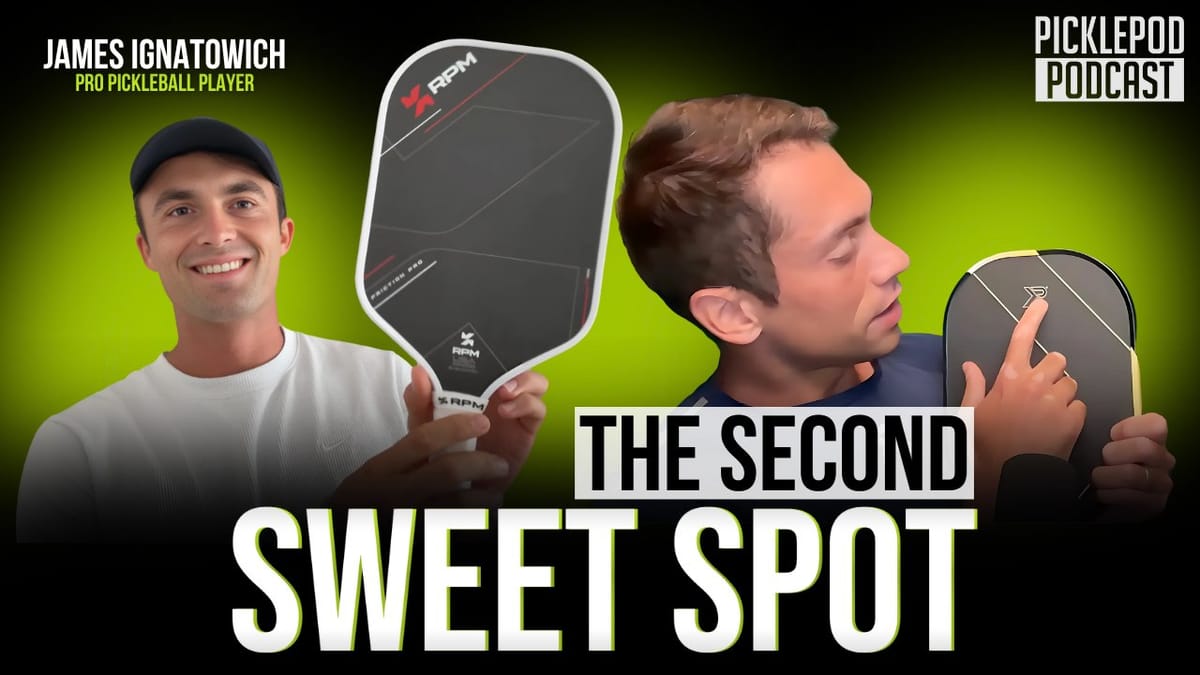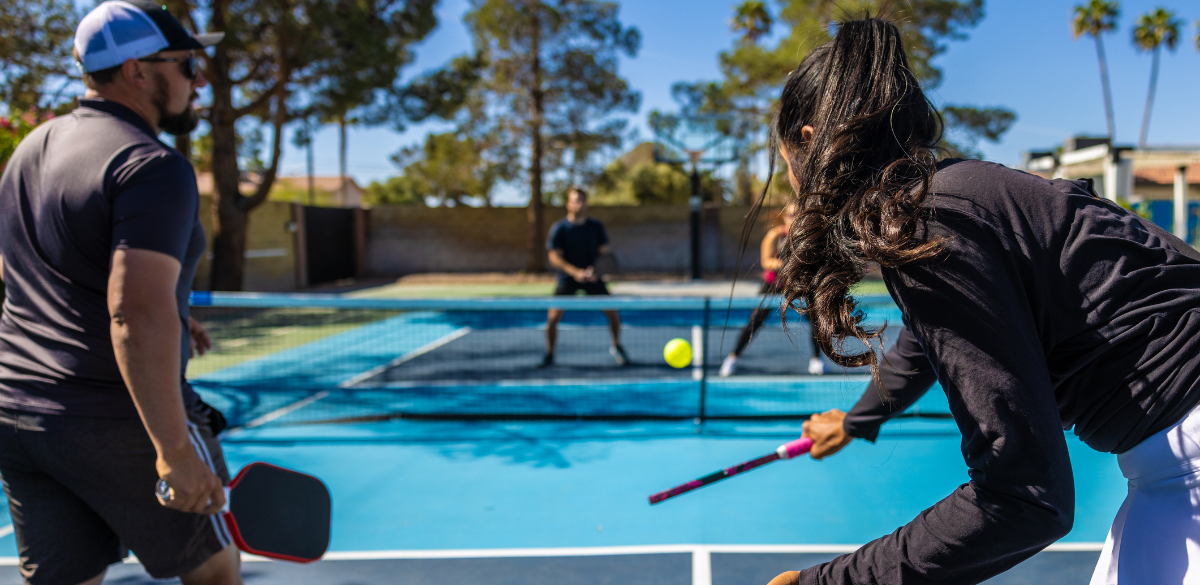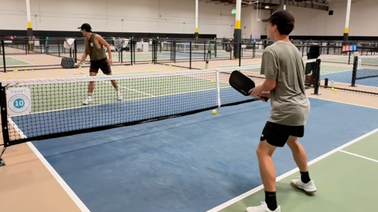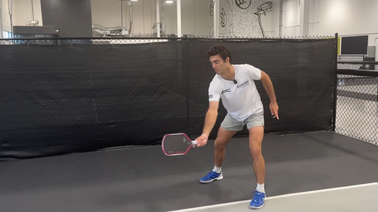
The aggressive dink isn't about overpowering your opponent. It's about creating pressure through placement, using deception to keep them guessing, and understanding when to attack versus when to reset.
There's a moment in every pickleball player's journey when they realize that dinking isn't just about keeping the ball low. It's about creating pressure, forcing errors, and setting up the kill shot.
And who better to learn from than James Ignatowich, a top 10-ranked PPA pro with a 6.5 DUPR rating?
In a recent video with APP pro Tanner Tomassi, Ignatowich breaks down the art of aggressive dinking at the kitchen line, sharing insights that could transform your game whether you're grinding through 3.5 or competing at tournament level.
The Deep vs. Shallow Debate
Here's where things get interesting. Most recreational players think aggressive dinking means hitting hard, but Ignatowich reveals it's actually about placement and timing.
When taking a dink out of the air, Ignatowich aims deeper. Why? Because your opponent sees you attacking the ball early and naturally backs off the line an inch or two, worried you might speed it up. That hesitation is exactly what creates the opening for an aggressive dink at their feet. He explains:
"If I'm taking a dink out of the air, you might think that I'm going to speed that ball up because I very well could. So you're not going to be leaning in as much, and instead you'll be maybe an inch or two off the line."
But shallow dinks have their place too. When you're on the defensive (maybe your opponent just hit an aggressive dink and they're leaning in), that's when you go short.
You're not trying to win the point; you're trying to neutralize it and reset.

The Technique That Changed Everything
Ignatowich's approach to topspin dinks challenges conventional wisdom. Forget what you've heard about using your wrist or crossing your body with the paddle.
Ignatowich takes a page out of tennis legend Rafa Nadal's book instead.
"When I'm hitting aggressive dinks with topspin, I'm finishing on the same side of my body."
The key? Keep your wrist locked (but not too tight) and never cross the plane of your body.
This applies to both forehand and backhand dinks. When hitting crosscourt forehands, Ignatowich mimics a ping-pong forehand, finishing on the same side, just like Ben Johns does.
This technique isn't just about consistency. It creates deception. From that position, you can:
- Speed up down the line
- Speed up through the middle, or
- Continue dinking crosscourt
Your opponent has to respect all three options.
The Three Deadly Mistakes
After coaching hundreds of players, Ignatowich has identified the most common errors that kill aggressive dinking:
- Not using enough legs. You can't hit a quality aggressive dink standing upright. You have to bend your knees, especially on the backhand side. No negotiation here.
- Letting the ball come to you. When taking dinks out of the air aggressively, lean forward. Follow the ball with your outside leg so you stay behind it. Contact the ball at its apex, not after it's already dropping.
- The wrist flick. There are different ways to misuse your wrist, but the worst is crossing from right to left (for righties). A little wrist action upward isn't terrible, but that windshield wiper motion? That's a recipe for inconsistency.
The Two-Handed Revolution
Ignatowich and Riley Newman pioneered the aggressive two-handed backhand dink, and now it's everywhere. Ryan Fu, Max Freeman: they've all adopted it. Even Tanner admits it's become one of his go-to shots.
The secret? Keep your paddle face above your hand the entire time. This forces you to get low, really low, with your knees bent. But here's what most people miss: about 70% of the power should come from your non-dominant hand.
"If I took my right hand off of it, I could still maybe hit a decent dink. But if I took my left hand off, you know, I'm just using my right hand. That's way too much wrist."
The two-hander also creates massive deception. From that squat position, you can speed up, lob, or continue dinking. But if you're dinking with one hand and suddenly throw both hands on the paddle, your opponent knows exactly what's coming.

Why This Matters Beyond Technique
What makes Ignatowich's teaching so valuable isn't just the mechanics. It's the strategic framework. He's not teaching shots in isolation; he's teaching you how to think about point construction.
- When do you go aggressive?
- When do you neutralize?
- How do you use your opponent's positioning against them?
These are the questions that separate good players from great ones.
The aggressive dink isn't about overpowering your opponent. It's about creating pressure through placement, using deception to keep them guessing, and understanding when to attack versus when to reset.
That's the mental game that elevates your pickleball IQ.
And honestly, that's what makes watching pros like Ignatowich so valuable. You're not just learning a shot. You're learning how to see the game differently.

Love Pickleball? Join 100k+ readers for free weekly tips, news & gear deals.
Subscribe to The DinkGet 15% off pickleball gear at Midwest Raquet Sports









